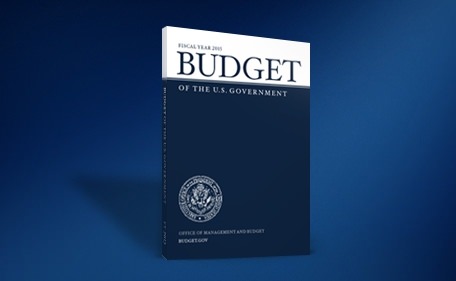5.3: Sources of Revenue and Expenditures of the U.S. Government
- Page ID
- 2017
\( \newcommand{\vecs}[1]{\overset { \scriptstyle \rightharpoonup} {\mathbf{#1}} } \)
\( \newcommand{\vecd}[1]{\overset{-\!-\!\rightharpoonup}{\vphantom{a}\smash {#1}}} \)
\( \newcommand{\id}{\mathrm{id}}\) \( \newcommand{\Span}{\mathrm{span}}\)
( \newcommand{\kernel}{\mathrm{null}\,}\) \( \newcommand{\range}{\mathrm{range}\,}\)
\( \newcommand{\RealPart}{\mathrm{Re}}\) \( \newcommand{\ImaginaryPart}{\mathrm{Im}}\)
\( \newcommand{\Argument}{\mathrm{Arg}}\) \( \newcommand{\norm}[1]{\| #1 \|}\)
\( \newcommand{\inner}[2]{\langle #1, #2 \rangle}\)
\( \newcommand{\Span}{\mathrm{span}}\)
\( \newcommand{\id}{\mathrm{id}}\)
\( \newcommand{\Span}{\mathrm{span}}\)
\( \newcommand{\kernel}{\mathrm{null}\,}\)
\( \newcommand{\range}{\mathrm{range}\,}\)
\( \newcommand{\RealPart}{\mathrm{Re}}\)
\( \newcommand{\ImaginaryPart}{\mathrm{Im}}\)
\( \newcommand{\Argument}{\mathrm{Arg}}\)
\( \newcommand{\norm}[1]{\| #1 \|}\)
\( \newcommand{\inner}[2]{\langle #1, #2 \rangle}\)
\( \newcommand{\Span}{\mathrm{span}}\) \( \newcommand{\AA}{\unicode[.8,0]{x212B}}\)
\( \newcommand{\vectorA}[1]{\vec{#1}} % arrow\)
\( \newcommand{\vectorAt}[1]{\vec{\text{#1}}} % arrow\)
\( \newcommand{\vectorB}[1]{\overset { \scriptstyle \rightharpoonup} {\mathbf{#1}} } \)
\( \newcommand{\vectorC}[1]{\textbf{#1}} \)
\( \newcommand{\vectorD}[1]{\overrightarrow{#1}} \)
\( \newcommand{\vectorDt}[1]{\overrightarrow{\text{#1}}} \)
\( \newcommand{\vectE}[1]{\overset{-\!-\!\rightharpoonup}{\vphantom{a}\smash{\mathbf {#1}}}} \)
\( \newcommand{\vecs}[1]{\overset { \scriptstyle \rightharpoonup} {\mathbf{#1}} } \)
\( \newcommand{\vecd}[1]{\overset{-\!-\!\rightharpoonup}{\vphantom{a}\smash {#1}}} \)
\(\newcommand{\avec}{\mathbf a}\) \(\newcommand{\bvec}{\mathbf b}\) \(\newcommand{\cvec}{\mathbf c}\) \(\newcommand{\dvec}{\mathbf d}\) \(\newcommand{\dtil}{\widetilde{\mathbf d}}\) \(\newcommand{\evec}{\mathbf e}\) \(\newcommand{\fvec}{\mathbf f}\) \(\newcommand{\nvec}{\mathbf n}\) \(\newcommand{\pvec}{\mathbf p}\) \(\newcommand{\qvec}{\mathbf q}\) \(\newcommand{\svec}{\mathbf s}\) \(\newcommand{\tvec}{\mathbf t}\) \(\newcommand{\uvec}{\mathbf u}\) \(\newcommand{\vvec}{\mathbf v}\) \(\newcommand{\wvec}{\mathbf w}\) \(\newcommand{\xvec}{\mathbf x}\) \(\newcommand{\yvec}{\mathbf y}\) \(\newcommand{\zvec}{\mathbf z}\) \(\newcommand{\rvec}{\mathbf r}\) \(\newcommand{\mvec}{\mathbf m}\) \(\newcommand{\zerovec}{\mathbf 0}\) \(\newcommand{\onevec}{\mathbf 1}\) \(\newcommand{\real}{\mathbb R}\) \(\newcommand{\twovec}[2]{\left[\begin{array}{r}#1 \\ #2 \end{array}\right]}\) \(\newcommand{\ctwovec}[2]{\left[\begin{array}{c}#1 \\ #2 \end{array}\right]}\) \(\newcommand{\threevec}[3]{\left[\begin{array}{r}#1 \\ #2 \\ #3 \end{array}\right]}\) \(\newcommand{\cthreevec}[3]{\left[\begin{array}{c}#1 \\ #2 \\ #3 \end{array}\right]}\) \(\newcommand{\fourvec}[4]{\left[\begin{array}{r}#1 \\ #2 \\ #3 \\ #4 \end{array}\right]}\) \(\newcommand{\cfourvec}[4]{\left[\begin{array}{c}#1 \\ #2 \\ #3 \\ #4 \end{array}\right]}\) \(\newcommand{\fivevec}[5]{\left[\begin{array}{r}#1 \\ #2 \\ #3 \\ #4 \\ #5 \\ \end{array}\right]}\) \(\newcommand{\cfivevec}[5]{\left[\begin{array}{c}#1 \\ #2 \\ #3 \\ #4 \\ #5 \\ \end{array}\right]}\) \(\newcommand{\mattwo}[4]{\left[\begin{array}{rr}#1 \amp #2 \\ #3 \amp #4 \\ \end{array}\right]}\) \(\newcommand{\laspan}[1]{\text{Span}\{#1\}}\) \(\newcommand{\bcal}{\cal B}\) \(\newcommand{\ccal}{\cal C}\) \(\newcommand{\scal}{\cal S}\) \(\newcommand{\wcal}{\cal W}\) \(\newcommand{\ecal}{\cal E}\) \(\newcommand{\coords}[2]{\left\{#1\right\}_{#2}}\) \(\newcommand{\gray}[1]{\color{gray}{#1}}\) \(\newcommand{\lgray}[1]{\color{lightgray}{#1}}\) \(\newcommand{\rank}{\operatorname{rank}}\) \(\newcommand{\row}{\text{Row}}\) \(\newcommand{\col}{\text{Col}}\) \(\renewcommand{\row}{\text{Row}}\) \(\newcommand{\nul}{\text{Nul}}\) \(\newcommand{\var}{\text{Var}}\) \(\newcommand{\corr}{\text{corr}}\) \(\newcommand{\len}[1]{\left|#1\right|}\) \(\newcommand{\bbar}{\overline{\bvec}}\) \(\newcommand{\bhat}{\widehat{\bvec}}\) \(\newcommand{\bperp}{\bvec^\perp}\) \(\newcommand{\xhat}{\widehat{\xvec}}\) \(\newcommand{\vhat}{\widehat{\vvec}}\) \(\newcommand{\uhat}{\widehat{\uvec}}\) \(\newcommand{\what}{\widehat{\wvec}}\) \(\newcommand{\Sighat}{\widehat{\Sigma}}\) \(\newcommand{\lt}{<}\) \(\newcommand{\gt}{>}\) \(\newcommand{\amp}{&}\) \(\definecolor{fillinmathshade}{gray}{0.9}\)
The federal government’s budget for 2016 was $3.8 trillion. This chapter will provide a brief overview of some of the budget’s key areas of expenditure. Policymakers make considerable effort to ensure that long-term priorities are protected from the heat of the election cycle and short-term changes in public opinion. The role of politics in drafting the annual budget is large.
What is Revenue?
Revenue is defined as, "income, especially when of a company or organization and of a substantial nature." All three levels of government within the United States require an enormous amount of money to run its programs and institute its policies. According to the U.S. government, all three levels (federal, state, local) will collect nearly $6 trillion in revenues for the fiscal year 2017. Since the end of World War II, revenues have grown exponentially. When adjusted for inflation and population, revenues have grown by more than 800 percent.
It is a fact that taxes can influence the economy by affecting various aspects of consumer behavior, resource allocation, growth, and productivity, as well as saving and spending, since the burden of taxes can be transferred to others.
Tax Collection
It is a fact that taxes can influence the economy by affecting aspects of consumer behavior, resource allocation, growth, and productivity. In addition, an individual’s saving and spending may be influenced by taxes as the burden of taxes is transferred to them.
Taxes can either encourage or discourage consumer activities. A positive aspect of a tax would be that homeowners are allowed to use interest payments on their mortgages as a tax deduction, while a sin tax is a high tax individuals pay on a socially undesirable product such as tobacco. The simplest effect is that taxes raise the final cost of a good or service and consumers will react by purchasing less of the product.
Tax Requirements and Principles
Taxes will always need to be collected, so they should meet certain requirements. They should be equitable, simple, and efficient. If the criteria are met, people will generally understand why they are being taxed and may be more receptive to the idea of the tax.
There are, however, two principles that revolve around taxes. The first is that the benefit principle of taxation, which is that those who benefit from taxes should pay in proportion to the amount of benefits that they receive. The second concept is the ability to pay principle, in which those that can bear the burden of taxes should pay more than those who cannot pay taxes.
Types of Taxes
Taxes are proportional, progressive, or regressive depending on the way in which the tax burden changes as income changes. The main source of revenue for the federal government is the individual income tax, while the second largest source is the FICA tax used to pay for Social Security and Medicare. Additional government revenues include excises taxes, gift taxes, customs duties, and user fees.
State and Local Revenues
State governments receive revenues from the federal government and the local government. Local governments benefit from intergovernmental revenues from the federal and state governments, as well as from property taxes, liquor sales, sales taxes, utility taxes, and other sources.
Tax Laws and Revisions
The most current tax issues revolve around the idea that taxes are too high and that the tax laws should be much simpler. Some current concepts are to create value added taxes, or a flat tax on individual income, or create more progressive tax brackets. Politicians and government officials revise taxes depending on the social and economic goals of their administrations, therefore tax laws can change from year to year and may either increase or decrease taxes on individuals, businesses or corporations.
Paying Taxes
Every year, in the middle of April, U.S. citizens and residents are required to file an income tax form. The following figure shows the 1040EZ tax form, which is the simplest of all tax forms. For the majority of us, this is one of the most direct pieces of contact that we have with the government.
Based on the declarations we file, we are required to pay taxes on the income we have earned over the year. These tax revenues are used to finance a wide variety of government purchases of goods and services and transfers to households and firms. Of course, income taxes are not unique to the United States; most other countries require their residents to complete a similar kind of form.
Tax Forms
From the perspective of a household or a firm, the tax form is a statement of financial responsibility. From the viewpoint of the government, the 1040 tax form is an instrument of fiscal policy. The 1040 form is based on the U.S. tax code, and changes in that code can have profound effects on the economy—both in the short run and in the long run.
Taxes and the Economy
In this section, we look at the various ways in which income taxes affect the economy. An understanding of taxes is critical for policymakers who devise tax policies and for voters who elect them.
Tax policies are often controversial, in large part because they affect the economy in several different ways. For example, in the 2004 and 2008 U.S. presidential campaigns, one of the most contentious economic policy issues was an income tax cut that President George W. Bush had initiated in his first term and that the Republican Party wished to make permanent. That issue returned to the forefront of political discussion in 2010 when these tax cuts were renewed.
Politicians have argued about such matters since the country was founded. Should the government ensure it has enough tax revenue to balance its budget? How should we raise the revenues to pay for our government programs? What is the appropriate tax on the income received by individuals and corporations? Fiscal policy questions like these are debated in the United States and other countries throughout the world. They are tough questions for politicians and economists alike.
Politicians focus largely on who wins and loses—which groups will bear the burden of taxes and receive the benefits of government spending and transfers? They do so for political reasons and because one goal of a tax system is to redistribute income. Economists emphasize something rather different. Economists know that taxes are necessary to finance government expenditures. At the same time, they know that taxes can have the negative effect of distorting people’s decisions and lead to inefficiency. Hence economists focus on designing a tax system that achieves its goals of raising revenue and redistributing income, without distorting the decisions of individuals and firms too much.
Tax
In addition, macroeconomists have observed that taxes significantly affect overall economic performance, as measured by variables such as real gross domestic product (real GDP) growth or the unemployment rate. The government can use changes in taxes as a means of influencing aggregate spending in the economy.
In the United States, the federal government has often changed income taxes to affect overall economic performance. In this section, we examine two examples: the tax policies of the Kennedy administration of 1960–63 and the Reagan administration of 1980–88.
Our discussion of the Kennedy tax cut experience highlights the way in which variations in income taxes are used to help stabilize the macroeconomy. We use the Reagan tax cuts of the early 1980s to explore the growth implications of income taxes, which are often called “supply-side effects.”
Economic Policies
The government’s response to the economic crisis was unusual. We now turn to the government’s usual economic policies and the institutions, most of which we have already mentioned, responsible for deciding on and implementing the policies.
The Federal Budget Process

Video: The Federal Budget Process Explained
The budget is a statement of the president’s policy goals and priorities for the next fiscal year. It consists of two main parts. Receipts are the amounts anticipated in taxes and other revenue sources. Expenditures (outlays) are what the federal government expects to spend.
The budget is supposed to be submitted to Congress by February 1 of each year. It is studied by the House and Senate Budget Committees with the help of the Congressional Budget Office (CBO). The two committees prepare a budget resolution that sets ceilings for each of the items in the budget. In May, Congress adopts these budget resolutions. Over the summer, the House and Senate Appropriations Committees and their subcommittees decide on the specific appropriations.
In September, Congress passes a second budget resolution that reconciles the overall and itemized budget ceilings with the overall and itemized appropriations. By the end of this process, the specific budgetary allocations to various spending areas such as health, education, and defense have been approved by Congress. The modified document is then submitted to the president for signing, which he does if he accepts the congressional modifications. The president may choose to veto them, compelling the process of reconciliation to continue.
In reality, the timing of the passage of budget resolutions and the budget itself are dependent on the degree and intensity of partisan conflict, disagreement between Congress and the White House, disagreement between the House and Senate, and other clashes.
What happens if Congress and the president cannot agree on a budget? If Congress does not pass an appropriations bill (aka “budget”) before the start of the fiscal year on October 1, it must pass, and the president must sign, a continuing resolution (CR) to provide temporary “stopgap” funding for affected agencies and for discretionary programs. Without a Continuing Resolution, a “government shutdown” ma be the result. In 2013, a dispute over delaying or defunding health reform legislation (“Obamacare”) led to a 16-day shutdown of ordinary government operations beginning October 1 of that year. In the winter of 1995-1996, a 21-day shutdown of substantial portions of the federal government resulted from a dispute between President Clinton and the congressional Republicans.
WEB LINK
For more information on the federal budget process, visit Policy Basics: Introduction to the Federal Budget Process
Controls on Deficit Spending
Deficit spending occurs when the expenses and appropriations in a federal budget exceed the revenues for the same period. There are limits that have been placed on the annual budget process with regards to deficit spending. Congress operates under statutory deficit-control mechanisms that are aimed ant preventing tax and mandatory spending legislation from increasing the deficit and that place constraints on discretionary spending. These include:
PAYGO
The 2010 Pay-As-You-Go (PAYGO) Act requires that any legislative changes to taxes or mandatory spending that increase multi-year deficits must be “offset” or paid for by other changes to taxes or mandatory spending that reduce deficits by an equivalent amount. If Congress violates PAYGO, this triggers across-the-board cuts (known as “sequestration”) in selected mandatory programs in order to restore the balance between budget costs and savings. This legislation is designed to “zero out” the effects of appropriations that might cause the federal deficit to increase.
Discretionary Funding Caps
The Budget Control Act of 2011 (BCA) imposed limits or “caps” on the level of discretionary spending for defense and non-defense programs each year through 2021. Appropriations that exceed the cap in either category trigger sequestration in that category to reduce funding to the capped level.
BCA Sequestration
On top of any sequestration that is triggered by PAYGO or funding cap violations, the BCA also requires additional sequestration each year through 2021 in discretionary and selected mandatory programs which are split evenly between defense and non-defense funding. The BCA sequestration was implemented as a result of a BCA-created congressional joint select committee’s failure to propose a legislative plan that would reduce federal deficits by $1.2 trillion over ten years. If Congress passes appropriations that violates these statutes, forced spending cuts and sequestration penalties will be applied automatically unless Congress specifically modifies these requirements. As an example, policymakers modified the 2013 BCA sequestration requirement in the American Taxpayer Relief Act of 2012. Congress also arranged a similar deal with the Bipartisan Act of 2013 which called for reduced sequestration cuts in 2014 and 2015 while extending BCA sequestration of mandatory programs through 2023.

Mandatory Spending
Social Security, Medicare, and Medicaid expenditures are funded by more permanent congressional appropriations and so are considered mandatory spending. Social Security and Medicare are sometimes called "entitlements," because people meeting eligibility requirements are legally entitled to benefits, although most pay taxes into these programs throughout their working lives. Some programs, such as Food Stamps, are appropriated entitlements. Some mandatory spending, such as Congressional salaries, is not part of any entitlement program. Mandatory spending accounts for more than half of total federal outlays.
Medicare
Medicare was established in 1965. Spending for Medicare during 2016 was $692 billion. In 2013, the program covered an estimated 52.3 million people. Medicare consists of four distinct parts which are funded differently: Hospital Insurance, mainly funded by a dedicated payroll tax of 2.9% of earnings, shared equally between employers and workers; Supplementary Medical Insurance, funded through beneficiary premiums (set at 25% of estimated program costs for the aged) and general revenues (the remaining amount, approximately 75%); Medicare Advantage, a private plan option for beneficiaries, funded through the Hospital Insurance and Supplementary Medical Insurance trust funds; and the Part D prescription drug benefits, for which funding is included in the Supplementary Medical Insurance trust fund and is financed through beneficiary premiums (about 25%) and general revenues (about 75%). Spending on Medicare and Medicaid is projected to grow dramatically in the coming decades. The number of persons enrolled in Medicare is expected to increase from 47 million in 2010 to 80 million by 2030. While the same demographic trends that affect Social Security also affect Medicare, rapidly rising medical prices appear to be a more important cause of projected spending increases
Social Security
Social Security is a social insurance program officially called "Old-Age, Survivors, and Disability Insurance" (OASDI), in reference to its three components. It is primarily funded through a dedicated payroll tax of 12.4%. During 2010, an estimated 157 million people paid into the program and 54 million received benefits.
Since the Greenspan Commission in the early 1980s, Social Security has cumulatively collected far more in payroll taxes dedicated to the program than it has paid out to recipients—nearly $2.6 trillion in 2010. This annual surplus is credited to Social Security trust funds that hold special non-marketable Treasury securities. This surplus amount is commonly referred to as the "Social Security Trust Fund." The proceeds are paid into the U.S. Treasury where they may be used for other government purposes. Social Security spending will increase sharply over the next decades, largely due to the retirement of the baby boom generation. The number of program recipients is expected to increase from 44 million in 2010 to 73 million in 2030.
Because of the mandatory nature of the program and large accumulated surplus in the Social Security Trust Fund, the Social Security system has the legal authority to compel the government to borrow to pay all promised benefits through 2036, when the Trust Fund is expected to be exhausted. Thereafter, the program under current law will pay approximately 75–78 percent of promised benefits for the remainder of the century.
Discretionary Spending
Military Spending
During 2016, the Department of Defense spent $585 billion, an increase of $1 billion from 2015. This is a partial measure of all defense-related spending. The military budget of the United States during Fiscal Year 2014 was approximately $582 billion in expenses for the Department of Defense (DoD), $149 billion for the Department of Veterans Affairs, and $43 billion for the Department of Homeland Security, for a total of $770 billion. This was approximately $33 billion or 4.1% below 2013 spending. DoD spending has fallen from a peak of $678 billion in 2011. The U.S. defense budget (excluding spending for the wars in Iraq and Afghanistan, Homeland Security, and Veteran's Affairs) is around 4 percent of GDP. Adding these other costs places defense spending around 5 percent GDP.
The DoD baseline budget, excluding supplemental funding for the wars, grew from $297 billion in FY 2001 to a budgeted $534 billion for FY 2010, an 81 percent increase. According to the CBO, defense spending grew 9 percent annually on average from fiscal years 2000–2009. Much of the costs for the wars in Iraq and Afghanistan have not been funded through regular appropriations bills but through emergency supplemental appropriations bills. As such, most of these expenses were not included in the military budget calculation prior to FY 2010. Some budget experts argue that emergency supplemental appropriations bills do not receive the same level of legislative care as regular appropriations bills. During 2011, the U.S. spent more on its military budget than the next 13 countries combined.
Non-defense discretionary spending is used to fund the executive departments (e.g., the Department of Education) and independent agencies (e.g., the Environmental Protection Agency), although these do receive a smaller amount of mandatory funding as well. Discretionary budget authority is established annually by Congress, as opposed to mandatory spending that is required by laws that span multiple years, such as Social Security or Medicare. The federal government spent approximately $600 billion during 2016 on the Cabinet Departments and Agencies, excluding the Department of Defense, up $15 billion or 3 percent versus 2015. This represented 16 percent of budgeted expenditures or about 3.3 percent of GDP. Spending is below the recent dollar peak of $658 billion in 2010.
See 2019 FY budget here: https://www.whitehouse.gov/wp-content/uploads/2018/02/budge t-fy2019.pdf |
Tax Cuts Under President Trump
President Trump signed the Tax Cuts and Jobs Act into law in December 2017. CBO forecasts that the 2017 Tax Act will increase the sum of budget deficits (debt) by $2.289 trillion over the 2018-2027 decade, or $1.891 trillion after macro-economic feedback. This is in addition to the $10.1 trillion increase forecast under the June 2017 policy baseline and existing $20 trillion national debt.
The Tax Act will reduce spending for lower-income households while cutting taxes for higher-income households, as CBO reported on December 21, 2017: "Overall, the combined effect of the change in net federal revenue and spending is to decrease deficits (primarily stemming from reductions in spending) allocated to lower-income tax filing units and to increase deficits (primarily stemming from reductions in taxes) allocated to higher-income tax filing units."

Study/Discussion Questions
1. Explain the economic impact of taxes
2. List three criteria for effective taxes
3. What are the two primary principles of taxation?
4. How are taxes classified?
5. Explain the federal budget process. What is the role of the President? What is the role of Congress?
6. What happens if the President and Congress cannot agree on a federal budget by October 1?
7. What is deficit spending? What types of controls has Congress put into place in order to place limits on the use of deficit spending?
8. Do you think automatic sequestration (forced spending cuts) is an appropriate remedy for deficit spending? What would you recommend as an alternative? Defend your answer.
Sources:
[1] Nancy McGlen and Karen O’Connor, Women, Politics and American Society(Englewood Cliffs, NJ: Prentice Hall, 1995), table 4-11.
[2] Binyamin Appelbaum and David M. Herszenhorn, “Congress Passes Major Overhaul of Finance Rules,” New York Times, July 16, 2010, A1.
[3] Joe Nocera, “Dubious Way to Prevent Fiscal Crisis,” New York Times, June 5, 2010, B1, 7.
[4] For a comprehensive analysis of federal budgeting, see Dennis S. Ippolito,Why Budgets Matter: Budget Policy and American Politics (University Park, PA: Penn State University Press, 2003).
[5] Policy Basics: Introduction to the Federal Budget Crises. Center on Budget and Policy Priorities, http://www.cbpp.org/research/policy-basics-introduction-to-the-federal-budget -process. Accessed May 12, 2015.

